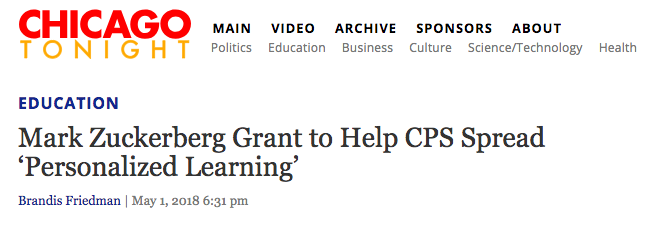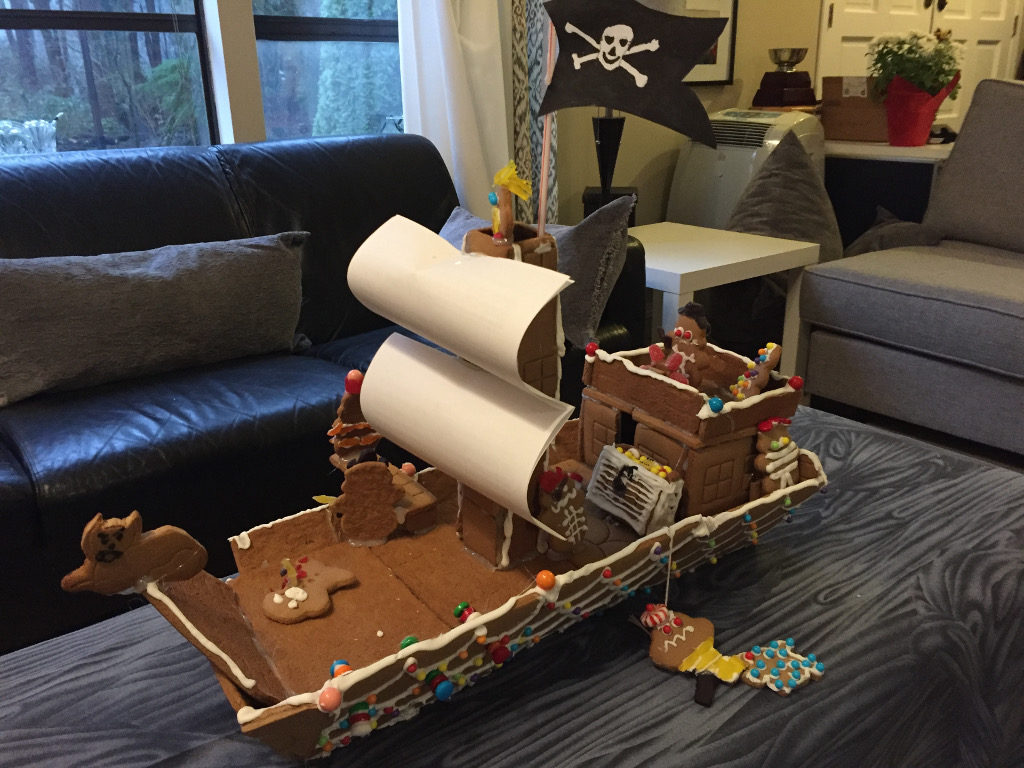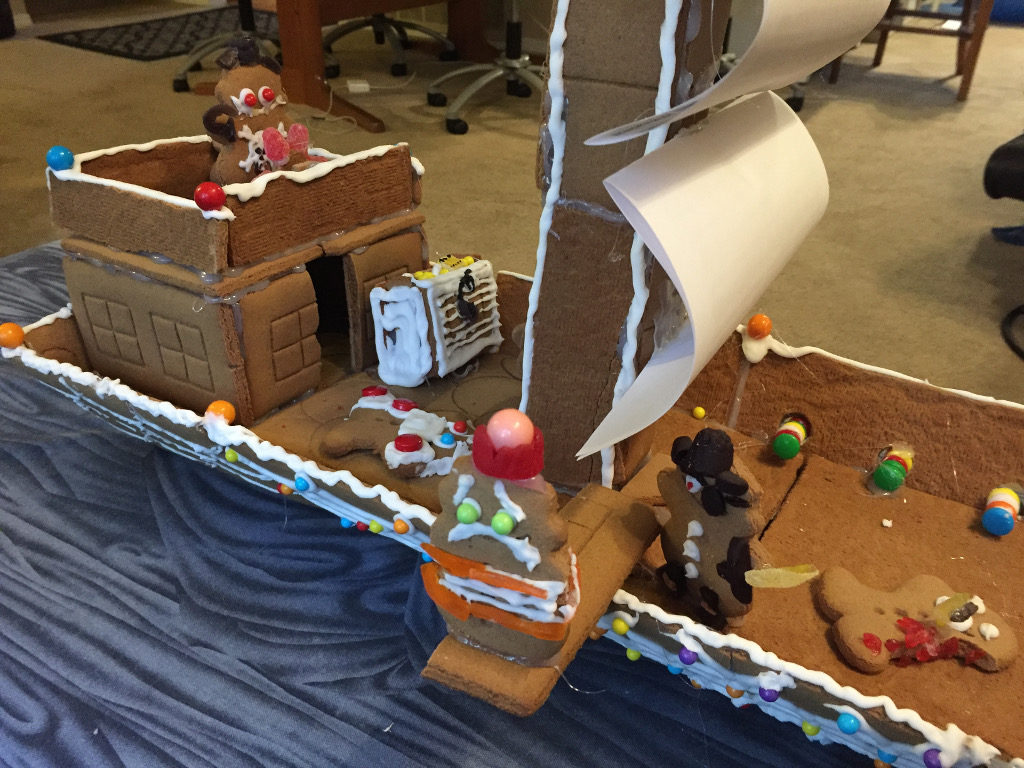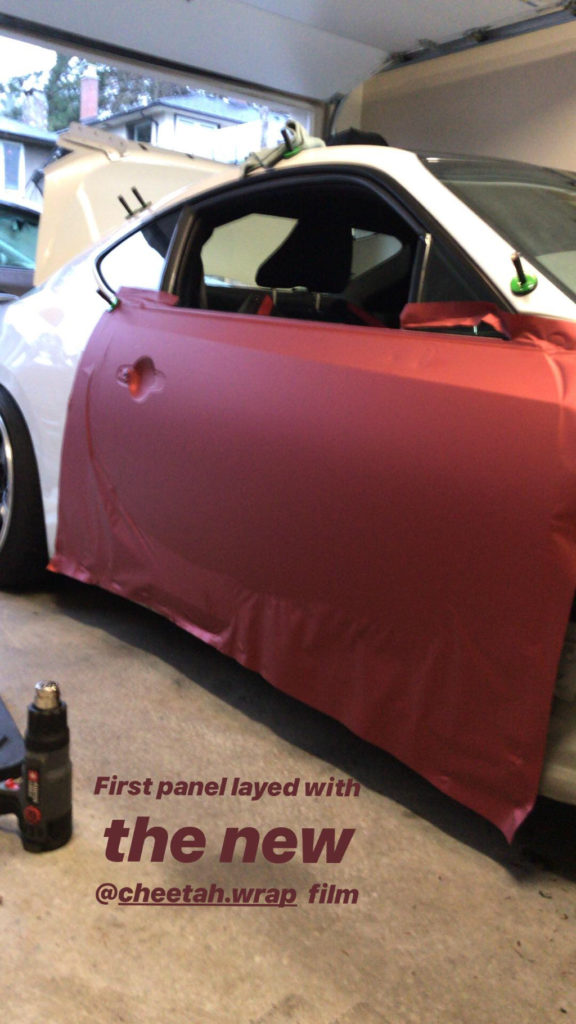 When educational issues hit the evening news it is very important that you understand how to move past the hype to see what is really happening. The announcement of Chicago Public Schools and nonprofit Leap Innovations receiving a $14 million grant from Chan Zuckerberg Initiative to expand personalized learning to 100 schools is definitely worth investigating. Without fully understanding what personalized learning means within the educational context, on its own merits, it sounds like a great idea. If we look to the recent confession from Larry Berger, CEO of Amplify about what personalized learning actually is. Berger’s company Amplify creates products and curriculum that are supposed to “truly personalize learning” (https://www.amplify.com/curriculum) and since he and his company has spent over a decade using big data algorithms to promote this model, his insider knowledge is useful.
When educational issues hit the evening news it is very important that you understand how to move past the hype to see what is really happening. The announcement of Chicago Public Schools and nonprofit Leap Innovations receiving a $14 million grant from Chan Zuckerberg Initiative to expand personalized learning to 100 schools is definitely worth investigating. Without fully understanding what personalized learning means within the educational context, on its own merits, it sounds like a great idea. If we look to the recent confession from Larry Berger, CEO of Amplify about what personalized learning actually is. Berger’s company Amplify creates products and curriculum that are supposed to “truly personalize learning” (https://www.amplify.com/curriculum) and since he and his company has spent over a decade using big data algorithms to promote this model, his insider knowledge is useful.
Berger argues that when most people refer to personalized learning they are referring to the engineering model of personalized learning. His explanation of the model is worth repeating verbatim (link to the full confession):
You start with a map of all the things that kids need to learn.
Then you measure the kids so that you can place each kid on the map in just the spot where they know everything behind them, and in front of them is what they should learn next.
Then you assemble a vast library of learning objects and ask an algorithm to sort through it to find the optimal learning object for each kid at that particular moment.
Then you make each kid use the learning object.
Then you measure the kids again. If they have learned what you wanted them to learn, you move them to the next place on the map. If they didn’t learn it, you try something simpler.
If the map, the assessments, and the library were used by millions of kids, then the algorithms would get smarter and smarter, and make better, more personalized choices about which things to put in front of which kids.
I spent a decade believing in this model—the map, the measure, and the library, all powered by big data algorithms.
Here’s the problem: The map doesn’t exist, the measurement is impossible, and we have, collectively, built only 5% of the library.
To be more precise: The map exists for early reading and the quantitative parts of K-8 mathematics, and much promising work on personalized learning has been done in these areas; but the map doesn’t exist for reading comprehension, or writing, or for the more complex areas of mathematical reasoning, or for any area of science or social studies.
If the CEO of one of the leading personalized learning companies is willing to confess that – The map doesn’t exist, the measurement is impossible, and we have, collectively, built only 5% of the library – then perhaps we should listen to him. Especially when he points to the fact that if we really want our kids to learn how to learn then we need to take a look at what “your best teachers and coaches do for you—without the benefit of maps, algorithms, or data—to personalize your learning?”
Chances are these great teachers and coaches created significant learning environments in which they gave you choice, ownership, and voice through authentic learning opportunities. Learning has always been personal because until you take ownership of your own learning by making meaningful connections you do not learn. Effective teachers have always known that learning is the responsibility of the learner and their role was to create the environment in which this could happen.
These types of teachers have always used the latest technology to enhance the learning environment and recognized that technology, big data, and algorithms as simply tools that can be used to help make this happen. Unfortunately, we have the tendency to look to the tools to solve our problems. We need to head the warning or confession of the foremost tool maker and remember that: The map doesn’t exist, the measurement is impossible, and we have, collectively, built only 5% of the library
Instead of looking to technology to solve the personal component of personalized learning we need to look to the great teachers who have been doing personalized learning all along by giving their learners choice, ownership, and voice through authentic learning opportunities. These people have also been using technology in those authentic learning opportunities to help their learner explore, create, collaborate and communicate.
Personalized learning is one of the many educational technology quick fixes that we have a tendency to hope will solve our learning challenges. There are many more ideas, issues, and topics that need clarification and we are looking to you and our Digital Learning and Leading students to join us in exploring these significant issues.
- Consider the following list as a starting point and let us know if you would like to write an article, post or other publication that will bring real clarity to the learning environment:
- Never been a better time to be a learner and/or teacher
- Growth mindset & Grit criticism
- STEM instruction is mostly delivered via lecture
- The much-needed shift to mastery learning
- Personalized learning problems & benefits
- Individualized instruction
- Differentiated instruction
- Additional names for competency-based education
- Why technology isn’t a Quick fix
- Silicon Valley’s failed promises with edtech
- Problems with SAMR and related quick fix methodologies
- Learning styles and related educational Zombie myths (bad ideas that just won’t die)
- Problem-based instruction that isn’t
- Shift from passive to active learning
- Choice
- Ownership
- Voice
- Authentic learning opportunities
- Why all elements of COVA must co-exist
- COVA from a student perspective
- The issue with taking ownership and agency – why folks don’t do this
- Creating significant learning environments
- Future of education
- Connecting the dots – making meaningful connections
- Why – go & show rather than sit & get
- Digital leader vs digital manager
- Design thinking for designed learning
- Confronting the Myth of the ‘Digital Native’
- Decades of evidence…but where is the change? Translating educational research to practice
- 18 years into the 21st century – how are we doing with 21st Century learning
- Communities of Practice (CoP’s) and their impact
- Problems with STEM/STEAM initiatives
- Importance of Learning How to Learn
- Importance of asking good questions vs finding right answers
- Reality of Thorndyke vs. Rhetoric of Dewey – more to be said
- Failing forward
- Feedback to Feedforward
- How to Avoid the Hype/Getting Caught in the whirlwind of day-to-day processes
Please contact either Dr. Thibodeax or myself (Dr. Harapnuik) if you would like to research, write, and publish on one or more of these topics. This list is also just a starting point so if you have other ideas with which you would like to collaborate write, just let us know.




































